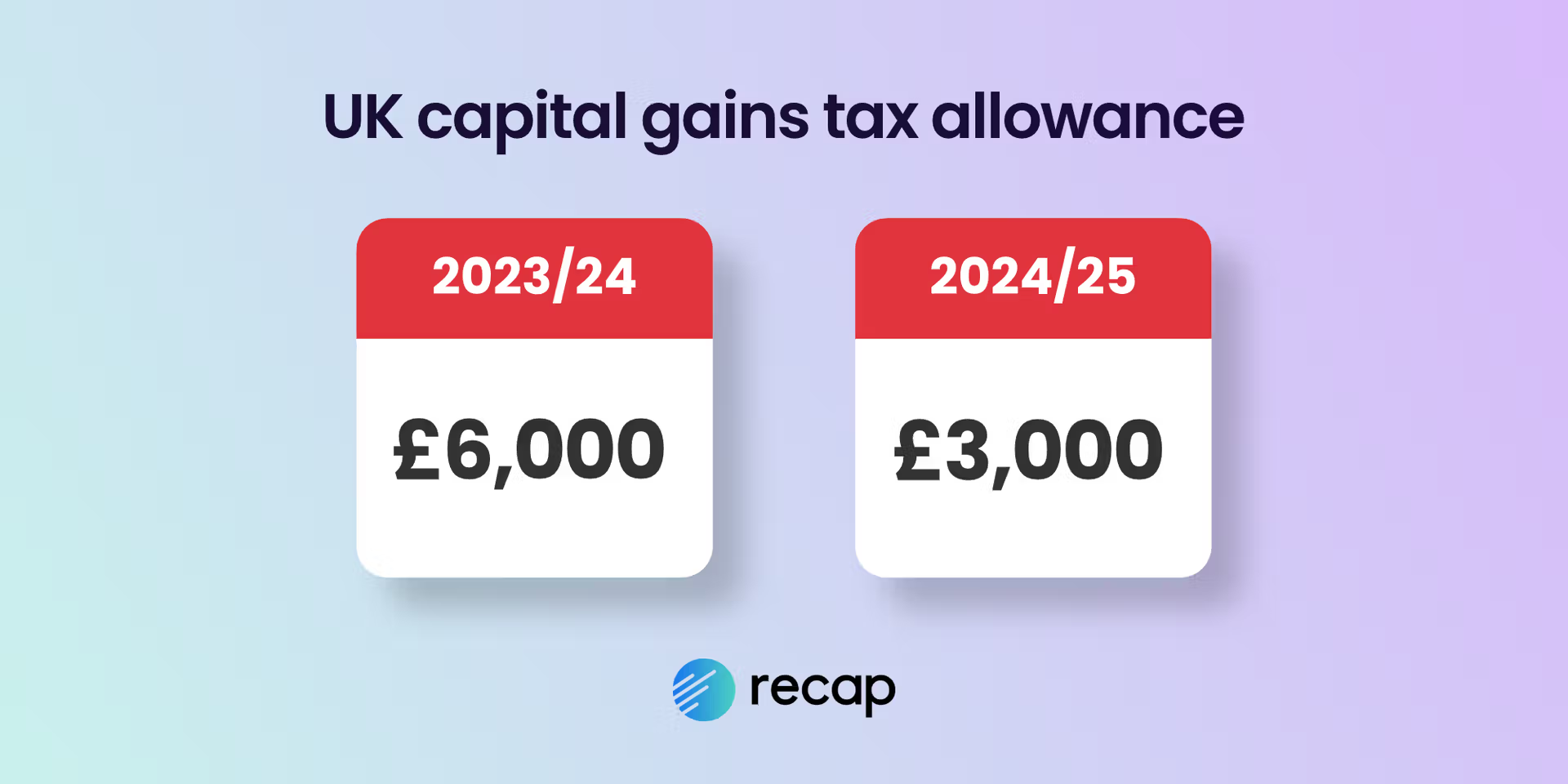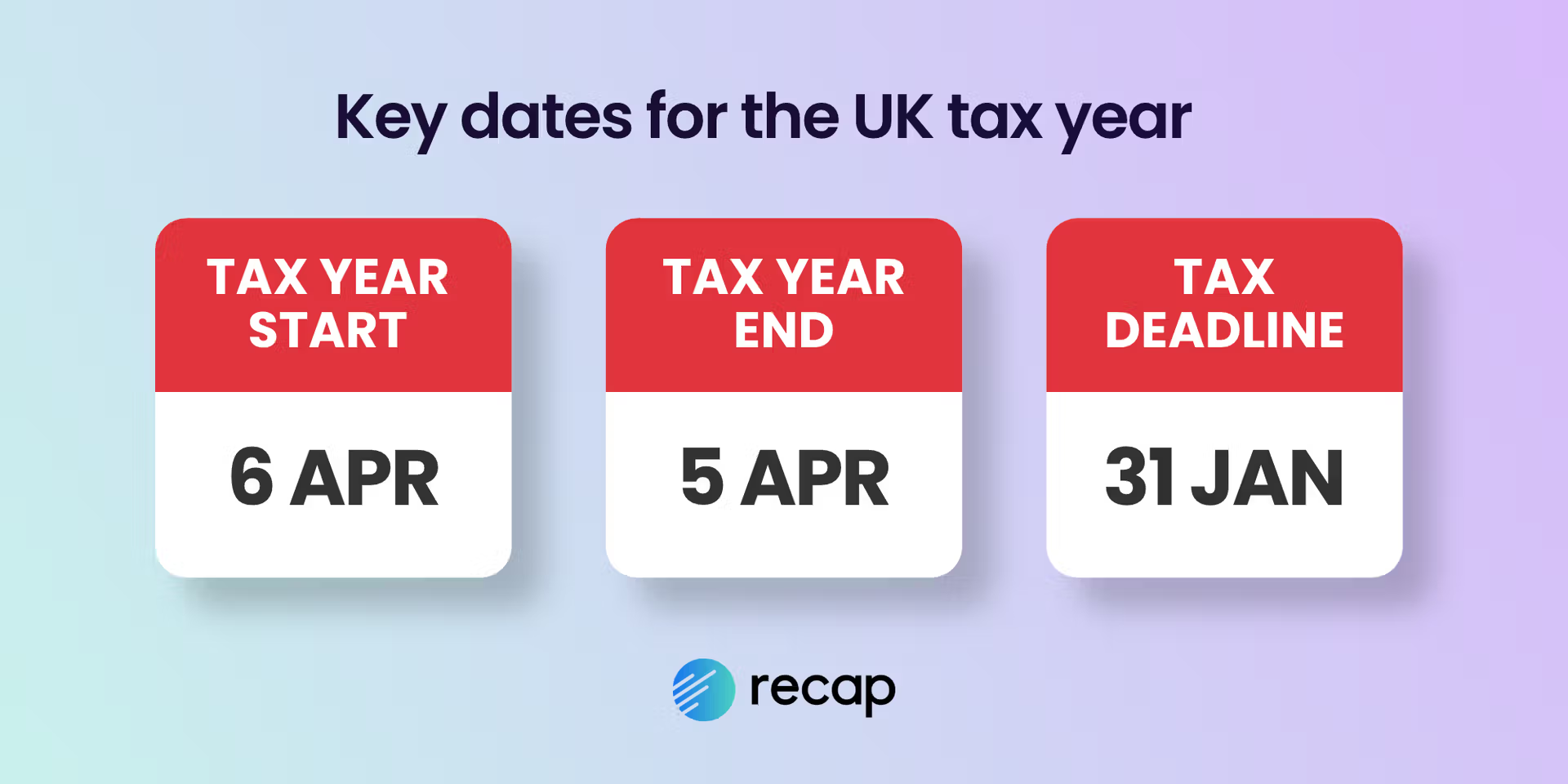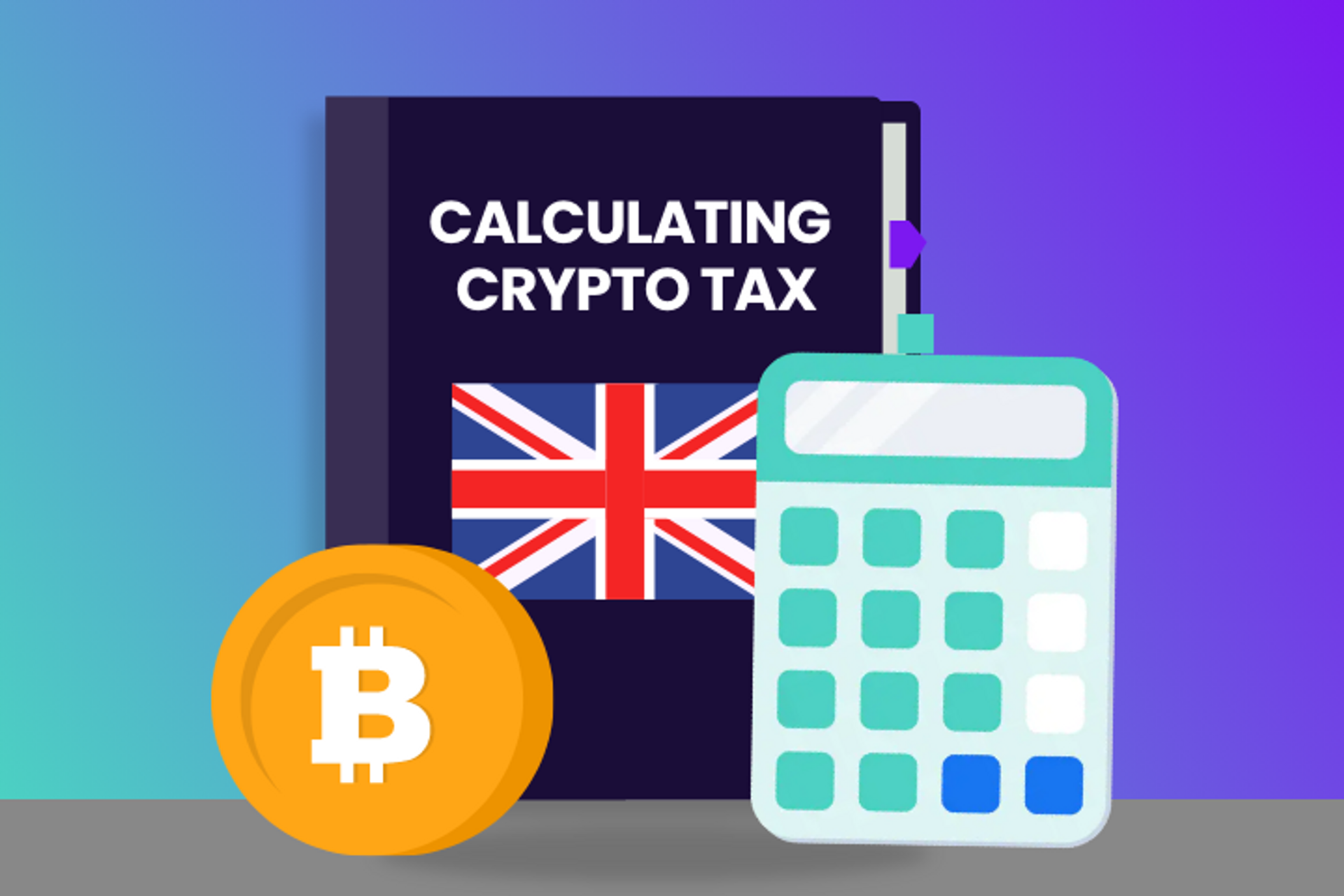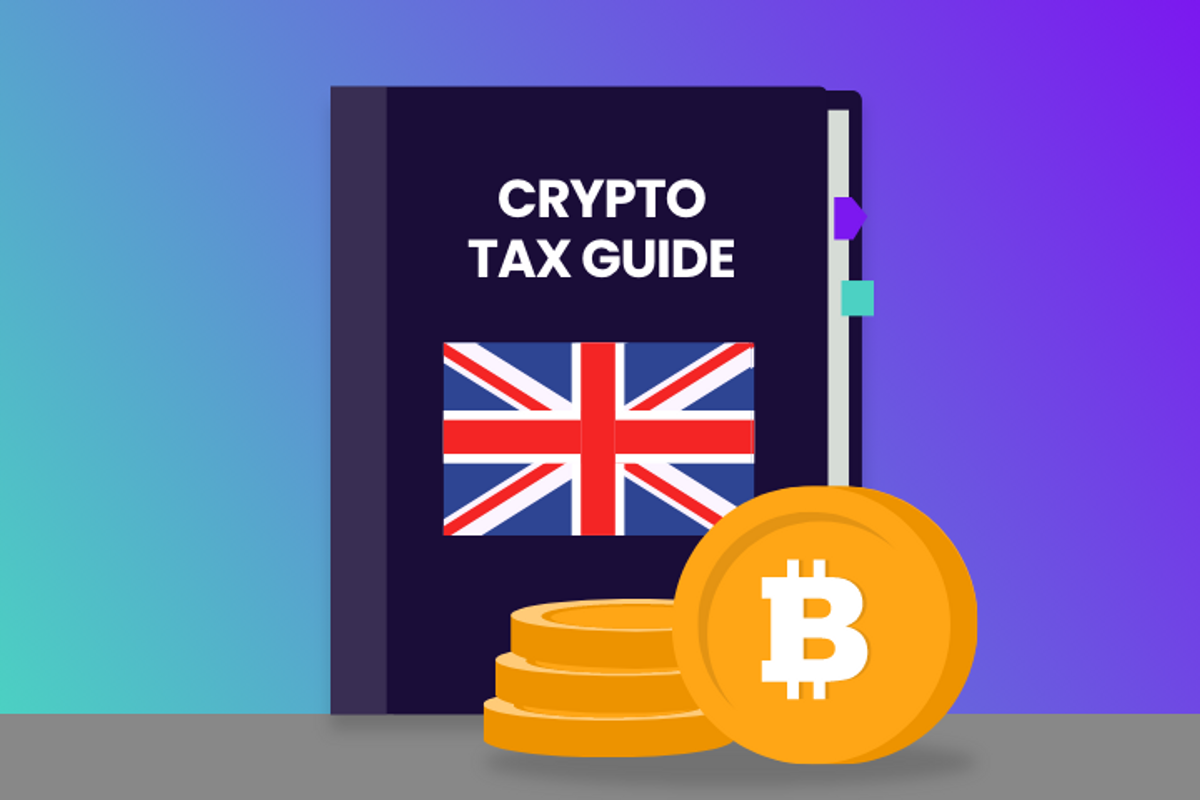

Cryptocurrency has surged in popularity worldwide, and tax authorities are paying close attention to crypto activity. For UK investors, understanding the tax implications of crypto income and capital gains is essential to stay compliant with HMRC.
In this article, we’ll guide you through calculating your crypto taxes, including what you need to pay, and highlight key dates and deadlines for filing your return. You’ll find the current UK income tax and capital gains tax (CGT) rates for the 2023/24 tax year, which is now open for filing, along with the new CGT rates for 2024/25 as announced in the 2024 Autumn Budget. Since the new rates apply immediately, we also explain how a split tax year impacts CGT calculations.
Tax rates
This article will be updated each year with the latest UK crypto tax rates and deadlines, making it a reliable resource for future tax years.
Disclaimer
This guide is intended as a generic informative piece. This is not accounting or tax advice that can be relied upon for any UK individual’s specific circumstances. Please speak to a qualified tax advisor about your specific circumstances before acting upon any of the information in this article.
UK crypto tax rates
In the UK, crypto activity can be subject to capital gains and income tax, which are taxed at different rates depending on your total annual earnings.
Generally, capital gains applies when you earn profit (or make a loss) from disposing of a crypto asset, such as selling, trading, gifting, or using it for purchases and are taxed at a rate between 10% and 24%.
When earning crypto, for example mining, staking and lending rewards, it’s likely you’ll need to pay income tax at a rate of up to 45%.
For a comprehensive overview of how crypto is taxed, refer to our UK crypto tax guide.
UK capital gains tax rates for crypto 2025
HMRC is clear that capital gains tax applies to crypto whenever you dispose of an asset. A disposal can include:
- Selling crypto for fiat (cashing out),
- Exchanging one crypto asset for another (for example trading Bitcoin for Ethereum)
- Gifting crypto (with some exceptions)
- Purchasing goods or services using crypto
- DeFi-type activity like staking, lending, liquidity pools or collateralised loans, where beneficial ownership of the tokens locked away is lost.
Capital gains allowance

When your total capital gains (for crypto and other property) exceeds the annual capital gains allowance you will need to pay tax. For the 2023 - 2024 tax year this allowance is £6,000 (reducing to £3,000 in 2024 - 2025). So if you made gains over this amount you will need to pay tax.
The tax rate you will pay on your taxable crypto gains is between 10% and 24%, depending on your total income for the tax year (this typically includes your annual salary, self-employment income and investment income).
UK capital gains tax rates for crypto 2023/24
| Taxable Earnings | Tax Bracket | Capital Gains Tax Rate |
|---|---|---|
| £12,300 to £50,270 | Basic Rate | 10% |
| £50,270+ | Higher Rate | 20% |
Where the taxable income is more than £50,270, the CGT rate is 20%. Where the taxable income is less than £50,270, the deficit below £50,270 becomes the amount of capital gains that can be taxed at the lower 10% capital gains tax rate. A maximum of £37,700 capital gains can be taxed at the 10% CGT rate where there is no income in the year.
So, if you have employment income of £30,270 and capital gains of £56,000 in the 2023 - 2024 tax year; your capital gains will be taxed as below:
- 0% on the first £6,000 of capital gains
- 10% tax on £20,000 of capital gains (£50,270 threshold less £30,270 income); and
- 20% tax on the remaining £30,000 of capital gains.
UK capital gains tax rates for crypto 2024/25
In the 2024 Autumn budget, the government announced changes to the capital gains tax rates, effective immediately. This means that the 2024/25 tax year is split into two periods for capital gains, with gains after the budget subject to the new, higher tax rates.
| Taxable Earnings | Tax Bracket | CGT Rate: 6th April 2024 - 29th October 2024 | CGT Rate: 29th October 2024 - 5th April 2025 |
|---|---|---|---|
| £12,300 to £50,270 | Basic Rate | 10% | 18% |
| £50,270+ | Higher Rate | 20% | 24% |
Although we don’t know what the tax return will look like yet, taxpayers will need to calculate their capital gains for the two periods and report both on the form. You will also have the choice of which period to apply the capital gains allowance and any losses that are rolled forward to.
How to reduce crypto capital gains tax
While it's not possible to avoid paying tax, there are strategies to reduce capital gains tax during the tax year:
- Keeping the net capital gains (after offsetting capital losses in the same tax year) below the capital gains allowance, by making carefully considered disposals
- Transferring crypto assets to a spouse/civil partner (a no-gain, no-loss disposal) so when they dispose of them it utilises their capital gains allowance and possibly a lower CGT rate.
For more detailed information and tax optimisation strategies take a look at our article Can you avoid paying tax on crypto in the UK?
UK income tax rates for crypto 2025
The rate of income tax depends on the overall income level and other types of income in the tax year. The income tax rates for the 2023 - 2024 tax year and 2024 - 2025 tax year for miscellaneous income, employment income and self-employment are:
Income tax rates 2023 - 2024 and 2024 - 2025
Income tax rates 2023-24
| Taxable income | Tax bracket | Tax rate |
|---|---|---|
| Up to £12,570 | Personal allowance* | 0% |
| £12,571 - £50,270 | Basic rate | 20% |
| £50,271 - £125,140 | Higher rate | 40% |
| £125,141+ | Additional rate | 45% |
Income tax rates 2024-25
| Taxable income | Tax bracket | Tax rate |
|---|---|---|
| Up to £12,570 | Personal allowance* | 0% |
| £12,571 - £50,270 | Basic rate | 20% |
| £50,271 - £125,140 | Higher rate | 40% |
| £125,141+ | Additional rate | 45% |
| Taxable income | Tax bracket | Tax rate |
|---|---|---|
| Up to £12,570 | Personal allowance* | 0% |
| £12,571 - £50,270 | Basic rate | 20% |
| £50,271 - £150,000 | Higher rate | 40% |
| £150,000+ | Additional rate | 45% |
The UK follows a progressive tax system meaning that the more income you make, the higher tax you pay. You do not pay a flat rate on all income based on your tax bracket, as you climb up the tax brackets your tax rate increases; for the 2023 - 2024 & 2024 - 2025 tax year:
- income up to £12,570 is tax free, then
- income between £12,571 and £50,270 is taxed at 20%, then
- income between £50,271 and £125,140 is taxed at 40%, and then
- income over £125,140 is taxed at 45%.
* The Personal Allowance goes down by £1 for every £2 that your adjusted net income is above £100,000.
Scottish income tax brackets 2025
In Scotland, income from crypto is treated the same, however it’s important to be aware of some slight differences in the Scottish income tax brackets.
Scottish income tax rates 2023/24
| Taxable Income | Tax Bracket | Tax Rate |
|---|---|---|
| Up to £12,570 | Personal Allowance* | 0% |
| £12,571 - £14,732 | Starter Rate | 19% |
| £14,733 - £25,688 | Basic Rate | 20% |
| £25,689 to £43,662 | Intermediate Rate | 21% |
| £43,663 - £125,140 | Higher Rate | 42% |
| £125,141+ | Top Rate | 47% |
Scottish income tax rates 2024/25
| Taxable Income | Tax Bracket | Tax Rate |
|---|---|---|
| Up to £12,570 | Personal Allowance* | 0% |
| £12,571 - £14,876 | Starter Rate | 19% |
| £14,877 - £26,561 | Basic Rate | 20% |
| £25,562 to £43,662 | Intermediate Rate | 21% |
| £43,663 - £75,000 | Higher Rate | 42% |
| £75,001 - £125,140 | Advanced Rate | 45% |
| £125,141+ | Top Rate | 48% |
How to calculate crypto taxes in the UK
Before you can work out how much crypto tax you owe you’ll need to calculate your net capital gain and net income from crypto. Once you have established these figures you can find the relevant tax bracket and estimate how much tax is payable based on the different tax rates. Below we explain how to calculate your capital gains and income from cryptocurrency.
Calculating your crypto capital gains

Your CGT liability is calculated based on the difference between the acquisition cost (also known as the cost basis) and the proceeds from the disposal (or sale price). Follow the steps below:
- Identify the cost basis: the original purchase price of the cryptoasset, including any transaction fees paid during the acquisition. Make sure to apply HMRC’s matching rules.
- Determine the disposal proceeds: the amount you receive from disposing of (selling, trading etc) the cryptocurrency.
- Calculate the gain or loss: Subtract the cost basis from the disposal proceeds. The result is your capital gain or loss. This calculation needs to be in pounds sterling, even if the transaction occurred in a different currency.
- Apply the correct CGT rate: Depending on the disposal date and your personal tax circumstances, a basic tax rate of 10% or 18% or higher tax rate of 20% or 24% may apply. If you have gains from multiple disposals, you’ll need to work out the total of them to determine your total capital gain for the tax year or period where there is a split tax year.
Calculating your crypto income
To calculate your income from cryptocurrency, for each transaction you’ll need to identify the sterling value of your crypto income at the time the crypto assets were receivable. The sterling value of all receipts is added together, then allowable expenses are deducted to arrive at the net crypto income for the tax year.
Head to our free crypto tax calculator tool to quickly estimate the capital gains on a single disposal, or get started with our crypto tax software to work out your crypto income and capital gains/losses across your portfolio.
UK tax deadlines for 2023/24

The UK 2023/24 tax year ran from 6th April 2023 to 5th April 2024. If you have any capital gains or income subject to tax during this period, you’ll need to file your self assessment tax return and pay any taxes due by 31st January 2025.
Here’s a list of the key dates to be aware of for filing your 2023/24 crypto taxes in the UK:
6th April 2023: Start of the 2023/24 financial tax year.
5th April 2024: End of the 2023/24 financial tax year.
6th April 2024: Start of the 2024/25 financial tax year.
5th October 2024: Self Assessment Tax Return registration deadline
Midnight, 31st October 2024: Deadline for submitting paper Self Assessment Tax Return by post.
30th December 2024: Deadline for submitting online Self Assessment, if you want tax to be paid via your PAYE tax code (where available - conditions must be met)
Midnight, 31st January 2025: Deadline for filing Self Assessment Tax Return online and payment of tax.
Important dates for the 2024/25 tax year
The UK 2024/25 tax year runs from 6th April 2024 to 5th April 2025. If you have any capital gains or income that is subject to tax from this period, you’ll need to file your self assessment tax return and pay any taxes due by 31st January 2026.
The 2024/25 tax year is a split tax year for capital gains. The UK government announced changes to the CGT rates in the Autumn budget, normally a change like this would be implemented at the start of the next tax year, however this time they were brought in immediately. This means that taxable disposals before the budget are subject to the previous rate of 10% and 20% and the new CGT rates of 18% and 24% apply to disposals from the 30th October 2024.
Here’s a list of the key dates to be aware of for filing your 2024/25 crypto taxes in the UK:
6th April 2024: Start of the 2024/25 financial tax year.
29th October 2024: Final day of 10% and 20% CGT rates.
30th October 2024: Autumn Budget and start of 18% and 24% CGT rates.
5th April 2025: End of the 2024/25 financial tax year.
6th April 2025: Start of the 2025/26 financial tax year.
5th October 2025: Self Assessment Tax Return registration deadline
Midnight, 31st October 2025: Deadline for submitting paper Self Assessment Tax Return by post.
Midnight, 31st January 2026: Deadline for filing Self Assessment Tax Return online and payment of tax.
How to file your crypto taxes to HMRC
Once you have calculated your capital gains and income from crypto you can report to HMRC. In the UK, there are various ways to file and pay your crypto taxes, most individuals choose the online Self Assessment Tax Return but let's explore the options available to you…
Capital gains tax real time service
If you only need to report and pay capital gains tax on your crypto you could use the government’s Capital Gains Tax real time service to report it straight away. Access to this is through the Government Gateway using your user ID and password.
Once you have reported your gains HMRC will send you a letter or email giving you a payment reference number and you can pay via the online tax payment service or through online banking or cheque. You’ll need to report by 31st December in the tax year after you made your gain and pay by 31st January.
This is a great service for crypto investors who make a small number of disposals to proactively manage their taxes throughout the year, however Self Assessment is likely to be more efficient for investors with large volumes of transactions.
Self assessment tax return
Filing a Self Assessment Tax Return is the most common method for reporting crypto taxes to HMRC, especially because many UK individuals with crypto are self employed and already filing this way. Your Self Assessment Tax Return can be filed online or by posting a completed paper form to HMRC.
Once you have calculated your capital gains and income they can be reported on the tax return. Capital gains from crypto should be combined with gains from other capital gains, such as property, and reported on the SA100 and the Capital Gains Summary SA108. Taxable income from crypto should be reported as Miscellaneous Income in box 17 of the SA100, with allowable expenses in box 18.
If you are classed as a financial trader in crypto assets, then your activity will need to be reported as financial trading on the Self Employment pages of the tax return. (This is extremely rare and we recommend seeking the advice of a professional before filing).
File your tax return with an accountant
Alternatively, you could hire an accountant to file your crypto taxes for you. Although, they are not able to use the capital gains tax real time service, they can file a Self Assessment Tax Return on your behalf. If you are unsure on your tax liability, then this option is great for giving you peace of mind!
The hardest part of filing your taxes as a crypto investor is keeping track of all your activity and calculating your capital gains and income. Recap makes this simple! Once you have connected your exchanges and wallets, our tax calculator identifies the taxable transactions, establishes fair market valuations for your assets and automatically calculates your capital gains and income, generating a crypto tax report with all of the information required to complete your Self Assessment Tax Return.
To get started and preview your capital gains for free, just hit the Get Started button!



